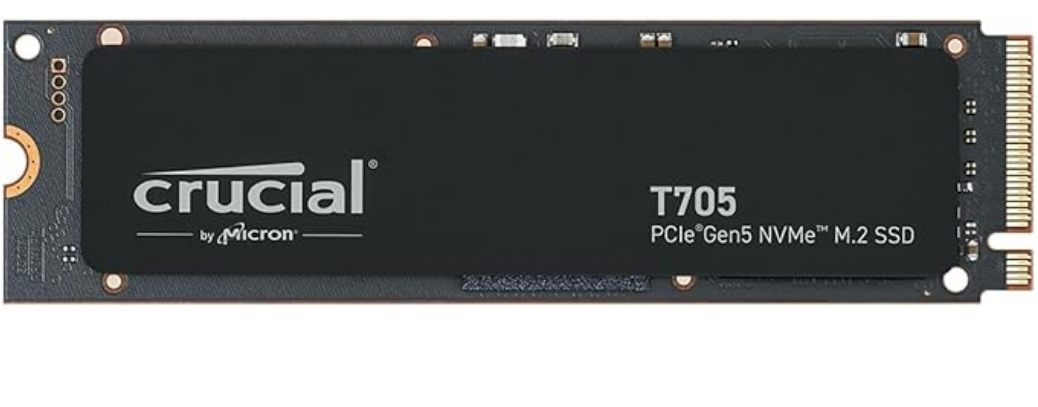I kind of knew this already, but I wanted to prove it to myself through hands-on experience. Thus, I sprung for what Tom’s Hardware calls “the fastest SSD” around right now. It’s depicted in the lead-in graphic: The Crucial T705. It’s read/write ratings range from 13,600/10,200 MB/sec for big items to 1,400K/1,750K IOPS on random 4K items. That’s fast!
Why Say: Channel Speed Trumps Device Speed?
I know this NVMe drive would scream if I mounted it in an M.2 PCIe x5 slot on a motherboard. But I wanted to see if it made any difference if plugged into the M.2 slot inside a 40Gbps USB4 NVMe enclosure. Long story short: it doesn’t. It runs more or less indistinguishably from the 2022 model WD Black SN770 I replaced in the US$53 Maiwo USB4 fan-cooled enclosure.
Although the T705 is much faster than the SN770, those speed differences only count when the bandwidth from the SSD to the CPU is fast enough to actually show off such deltas. Because Lenovo sent me the Yoga Slim 7x with a smaller, slower C: drive device, I’ll probably end up plugging into that PCIe channel to see what it does as an internal drive.
But that’s a project for another day. Today, I have two “lessons learned” to share:
1. A PCIe x3 or x4 NVMe SSD is plenty fast enough for even the fastest, most expensive USB4 drive enclosures currently available.
2. The T705 at US$165 is about twice as expensive as the SN770 (and the SN770 2TB model at US$120 is a much better deal, $/GB-wise)
What can I say? I had to know. Now I do, and I’m moving on to other, better uses for the T705. I may have to use Linux to clone the existing 0.5TB NVMe in the Slim 7X, but I’ll figure out how to make that swap work. As I said earlier: that’ll have to wait for another day.
